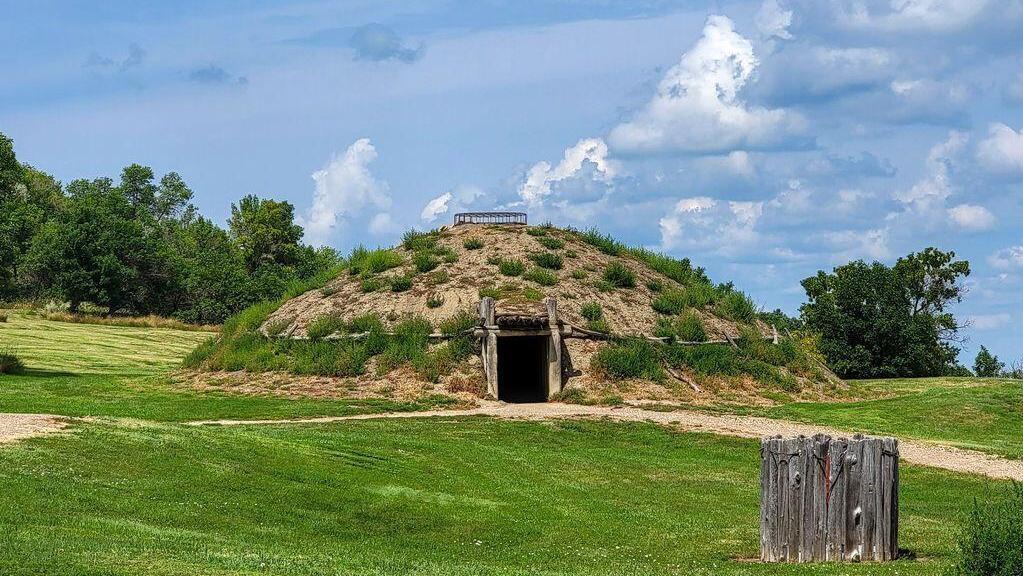
Mandan (Bismark), ND
Mandan Indian Village
The Mandan, Hidatsas, and Arikaras Indians lived in this area from 1200 AD until the 1800’s within communities of 300 to 2000 or more residents. A Mandan village, now known as On-A-Slant Village was located inside the Fort Abraham Lincoln state park and just a short distance from the campground. This particular village was settled in the 1500’s and occupied for at least 200 years before being decimated by a smallpox epidemic that killed about 80% of the inhabitants. Survivors of the epidemic moved further north. Lewis and Clark camped across the Missouri river from this village on October 20, 1804, and again on August 18, 1806. They recorded that the settlement was in ruins and had been abandoned for at least 25 years. We paid for a ranger guided tour of the village and it was well worth it as we go to tour two earthlodges closed to self-guided tours as well as gaining additional knowledge about life for the Indians in this area.

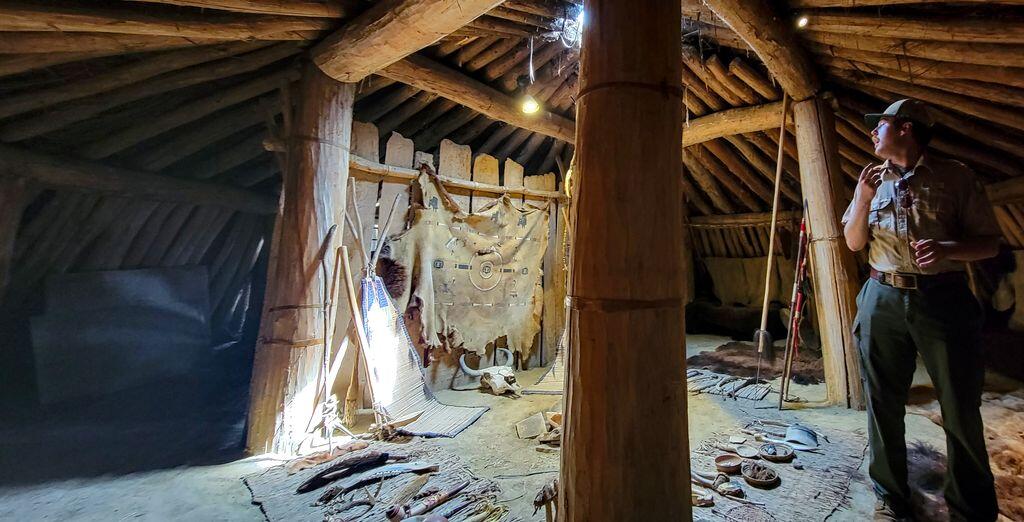

Fort Abraham Lincoln Infantry Post
In June 1872, on a bluff above the location where the Mandan tribe had established their village, a military post named Fort McKeen was built by two companies of the 6th U.S. Infantry under Lt. Col. Daniel Huston, Jr. The location offered sweeping views of the surrounding landscape. In preparation for the Northern Pacific Railroad to lay its track to the west through the Missouri River basin, the military dispatched these companies of Infantry to the area to provide protection for the survey and construction crews. The name Fort McKeen was short-lived; the designation was changed to Fort Abraham Lincoln on November 19, 1872. In 1873 Congress authorized the addition of a cavalry post and its construction was mostly completed the same year.
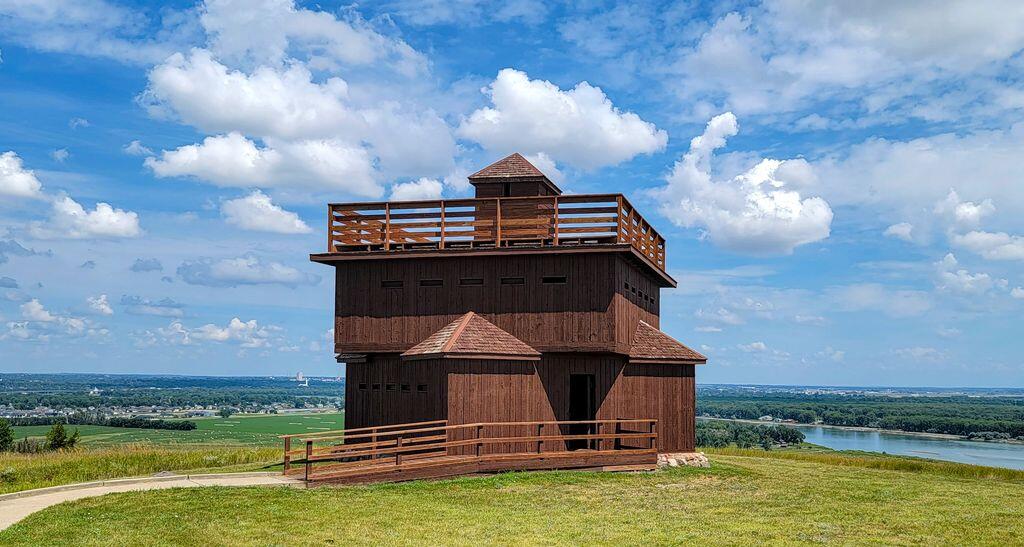
Fort Abraham Lincoln
By 1874, Fort Abraham Lincoln housed three companies of the 6th and 17th Infantries and six companies of the 7th Cavalry. With a total complement of about 650 men, the fort was among the largest and most important forts on the Northern Plains.
Lt. Colonel George Armstrong Custer was the first commander of the enlarged fort and served here from 1873 until his death at the Battle of the Little Big Horn in 1876. Upon completion of the railroad to Montana, Fort Abraham Lincoln had fulfilled its primary purpose. Consequently, the fort gradually declined in importance and in 1891 it was decommissioned. In its heyday, the fort encompassed 78 separate buildings. All of the original buildings were dismantled by area settlers and the materials were used in the construction of homes and farm buildings.
Today, due to past efforts by the Fort Abraham Lincoln Foundation, reconstructions of the Commanding Officer’s Quarters, Central Barracks, Granary, Commissary, and Stables now stand on the site.
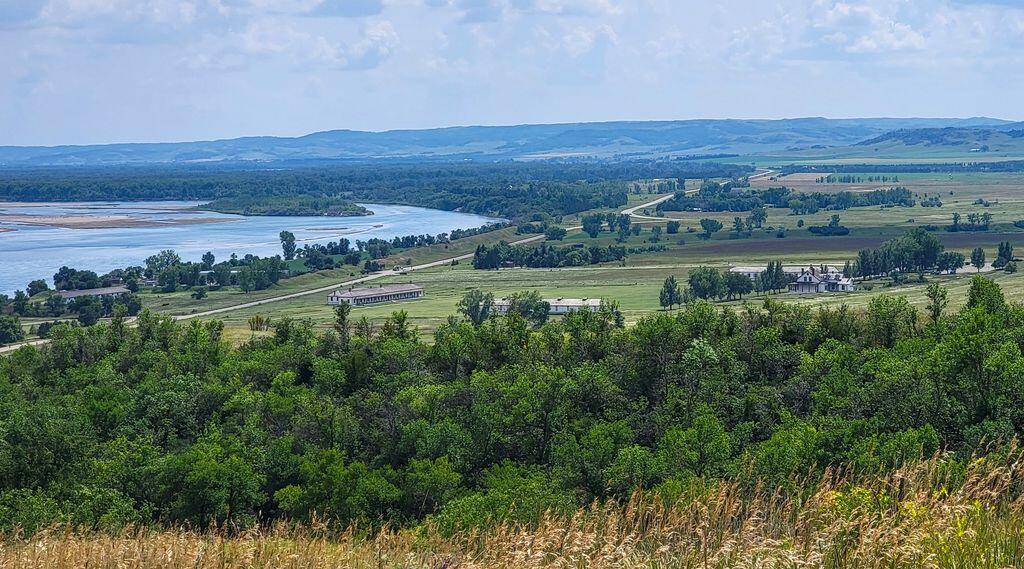
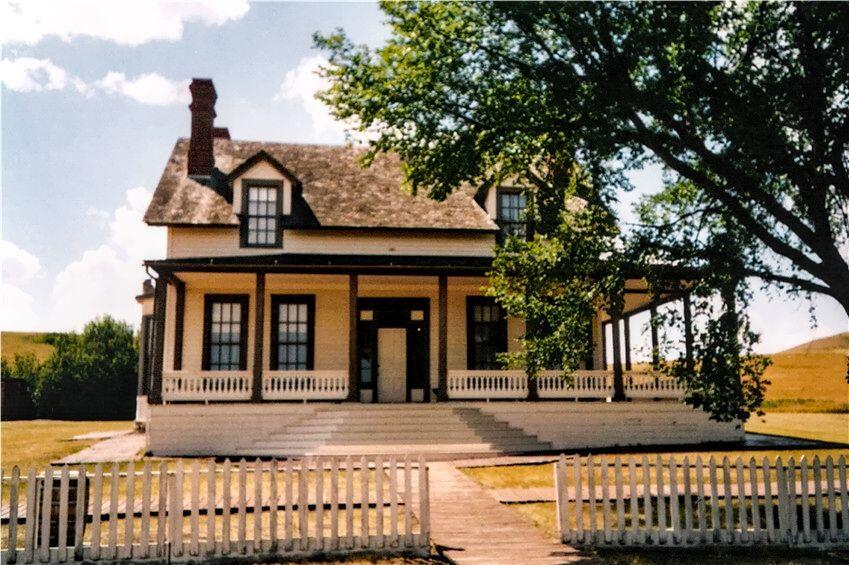
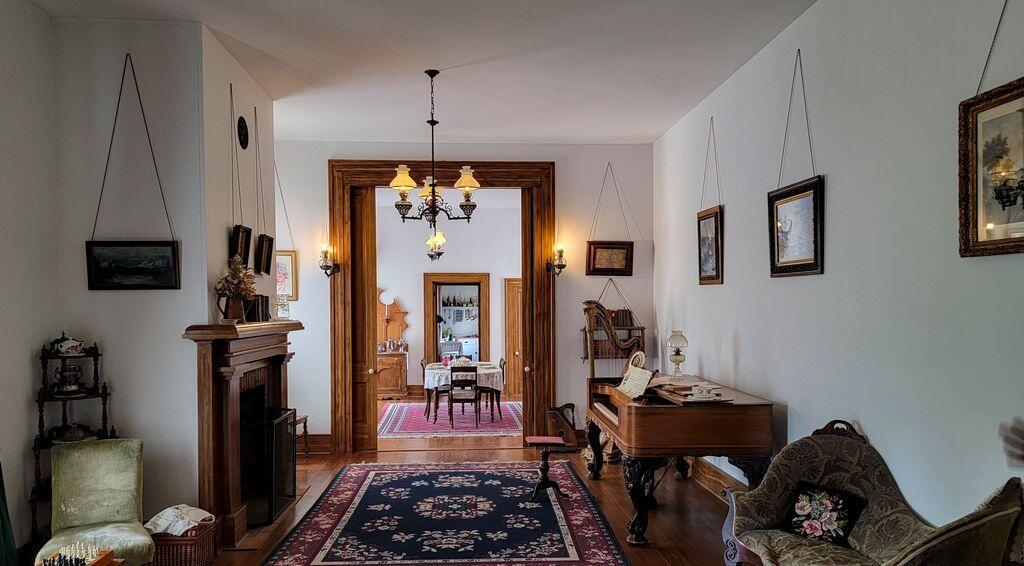
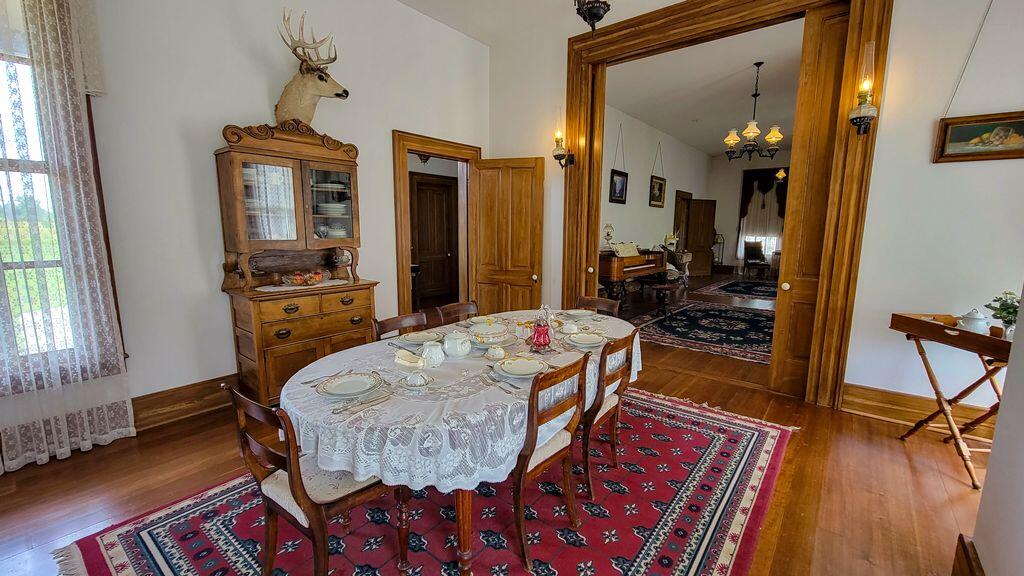

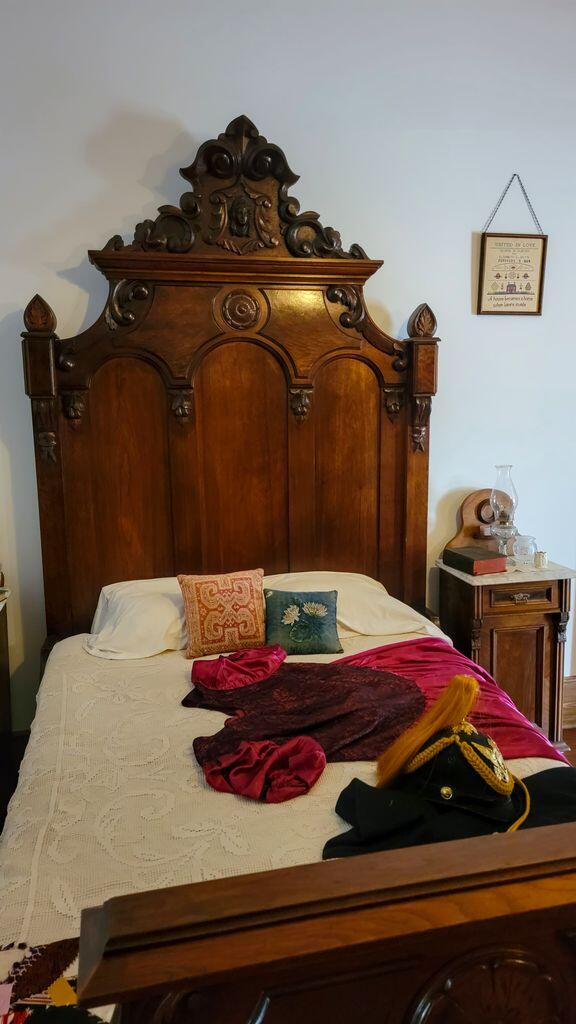
Lewis and Clark Winter 1804-1805 Quarters
In 1803 President Thomas Jefferson picked Meriwether Lewis to lead an expedition through the Northwest. His instructions to Lewis were to explore the Missouri River and others all the way to the Pacific Ocean to find the most direct and practical water route across the continent for the purpose of commerce. In the summer of 1803, Lewis invited William Clark to join the expedition and share the command. In the Fall of 1803 they begin to prepare the men for the expedition.
After leaving Missouri in May 1804, Lewis and Clark made it to the Washburn, ND area by October where they meet Mandan and Hidatsa Indians. They decide to build Fort Mandan across the river from the main village and stay for the winter. There they meet Toussaint Charbonneau, a French-Canadian fur trapper who is hired as an interpreter. Toussaint’s wife, Sacagawea, a Shoshone Indian, is to be instrumental in the trek across the country to the Pacific ocean.
In Washburn, ND there is a great interpretive center with lots of information about the expedition’s time in the area and their experiences with the Indians there. We really enjoyed spending a few hours there learning more about this part of their journey.
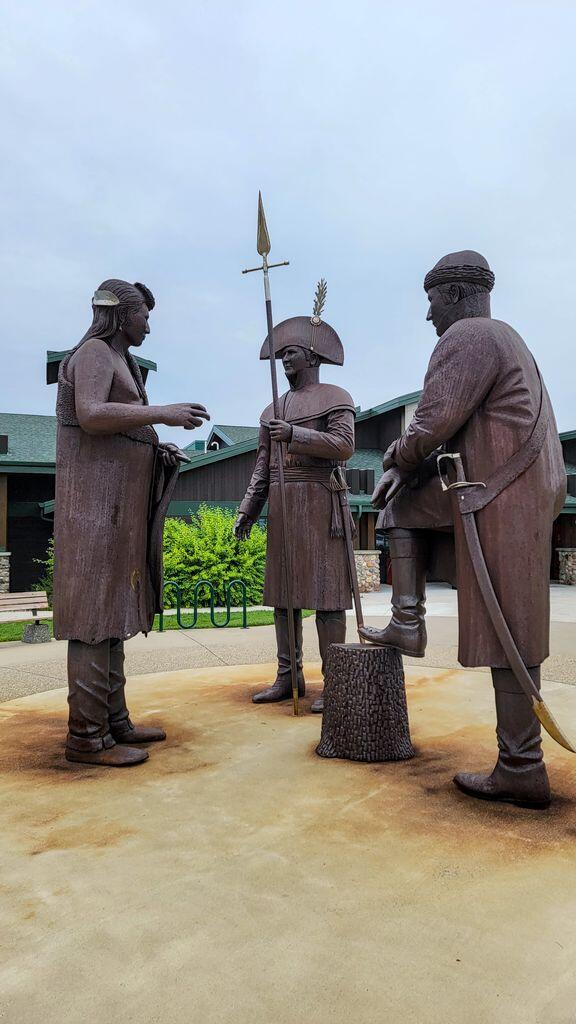
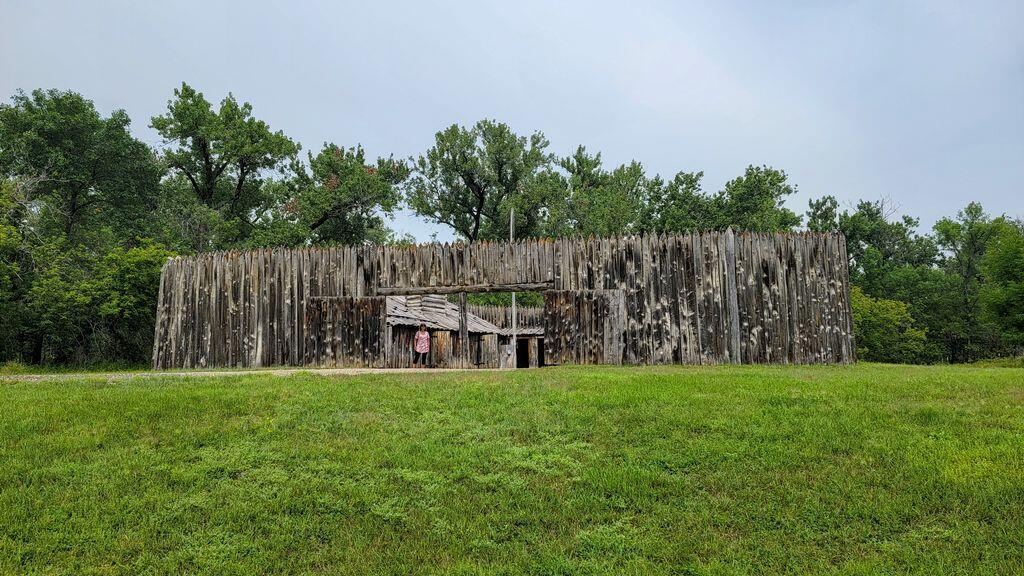
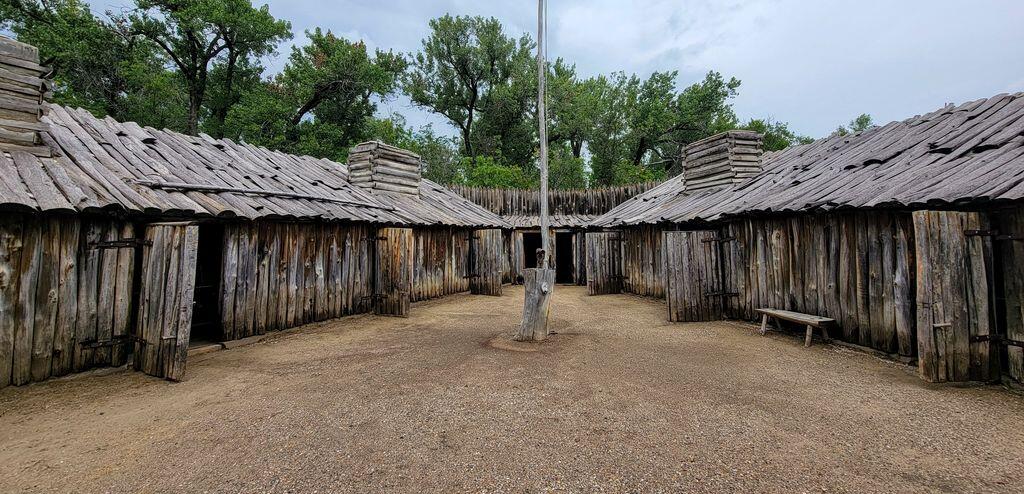

Park Review – Abraham Lincoln State Park
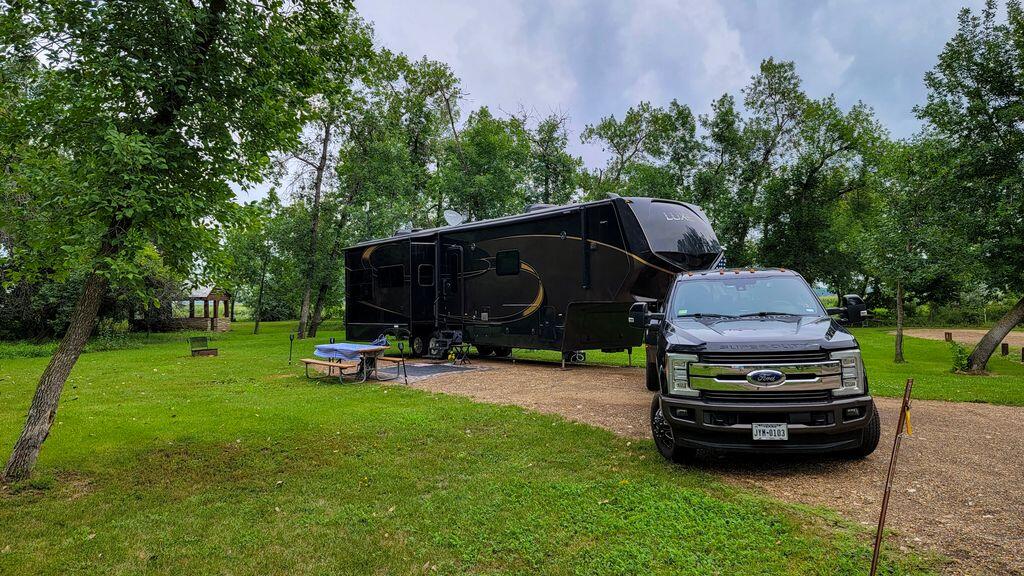
Rating: ⭐⭐⭐
Location: Mandan, ND
Type: State Park
Check-in/Check-out times: 4:00/3:00
Site Quality / Amenities: Roads are asphalt but pads are gravel. Each site has a fire pit and a picnic table. Some sites share water with an adjacent site. To make matters worse, many of the pull-thru sites are actually two sites which not only results in awkward and distant hookups but could result in having to back into a semicircular pull thru site. I’d suggest picking a pull through that is a single site or picking a back-in site. Site 72 which we stayed in was a single back-in site with it’s own water. None of the sites have sewer and some sites are primitive.
Access: From Interstate 94 the park is about 12 miles away on ND-1806 in Mandan, just west of Bismark.
Staff: Staff were friendly and helpful including those that provided for a fee tours of the Mandan Indian village and of Custer’s home in the fort.
Cellular/WiFi: There is no WiFi at the campsites and both Verizon and AT&T were usually good with slower speeds (<5Mbps) although there were periods where one worked and the other did not.
Restaurants: Peacock Alley – Mostly upscale pub fare in a historic location. Food and service were both a bit lacking and prices were high for what we got. Olive Garden – Over the last couple of years we’ve stopped several times at different Olive Garden locations. Although once a favorite, their food, and at times service, has gone down hill. At first we thought this was location specific, but it’s looking like it’s a bigger problem than that.
Nearby parks: We didn’t look at any nearby parks.
What we liked: Lots of historical significance within the park. The park is open with lots of trees and grassy areas.
What we didn’t like: See site quality about shared sites. While this might be great if you want a buddy site, it could be quite awkward if you don’t know the people you are sharing a site with, and might be unworkable in some circumstances. No sewer connections although there is a small dump station.
Verdict: This park has enough going for it that we would stay here again but only if we could reserve a single site.
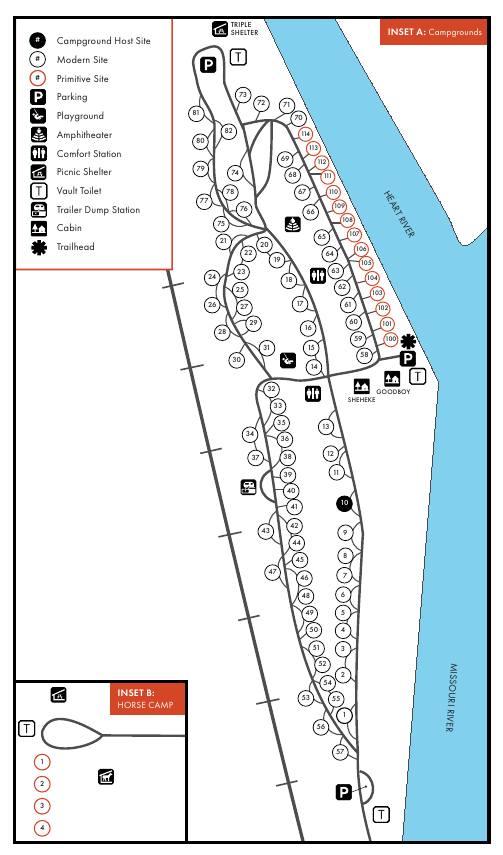
One thought on “Mandan (Bismark), ND”
I enjoy reading your blogs- traveling vicariously across the country with you!